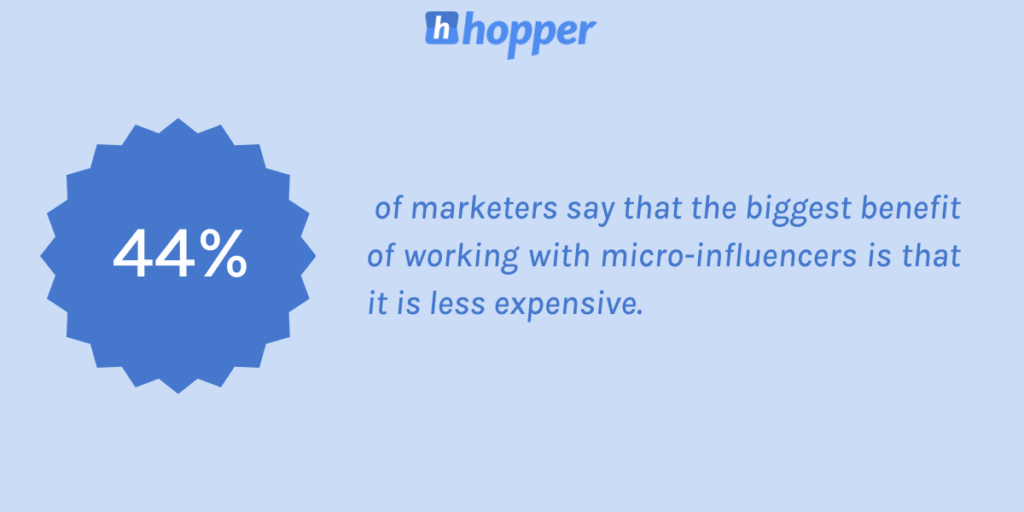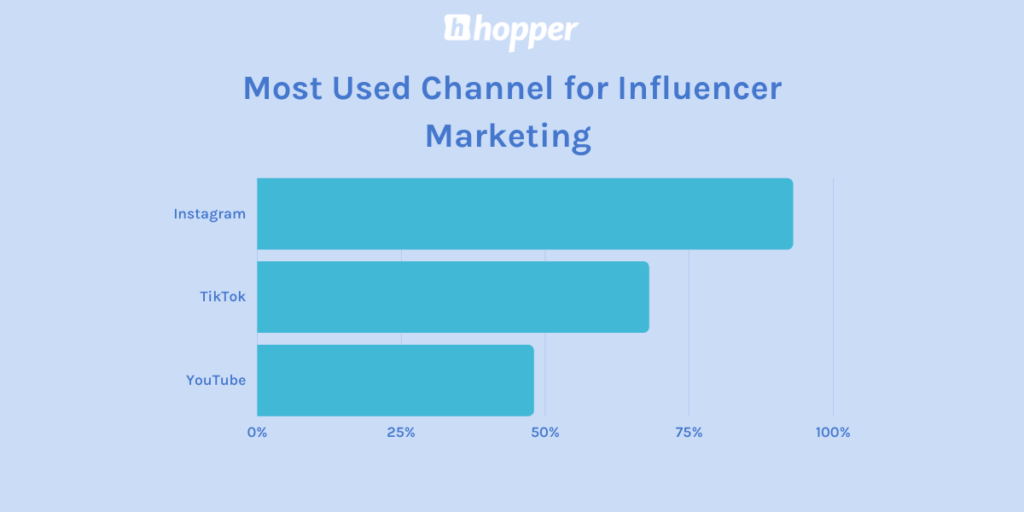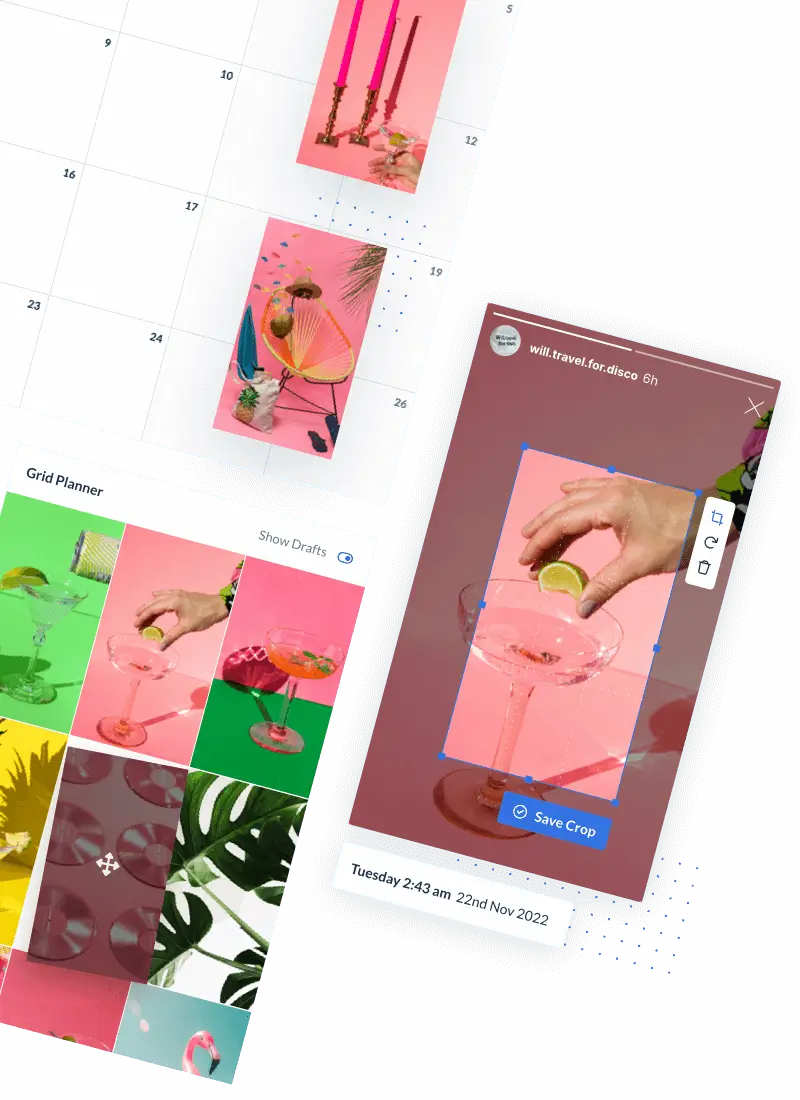There is a rising force in the landscape of influencer marketing, and it often goes unnoticed. Can you guess what this force is? Yup, micro-influencers.
These content creators and key opinion leaders (KOLs) possess smaller audiences, typically ranging from 10,000 to 75,000 followers. Despite their modest following, micro-influencers are proving to be great allies for brands, with conversion rates that rival those of celebrities and influencers with larger audiences.
In fact, according to Forbes, micro-influencers drive an impressive 60% higher campaign engagement rates than their macro-influencer counterparts. Using this force of micro-influencers can significantly boost your revenue, provided you craft a well-defined strategy.
Micro-influencers may have smaller followings, but they have large impacts on campaign engagement and conversion rates. Incorporate micro-influencers as a strategic component of your marketing plan and watch as they help you forge meaningful connections with your target audience, driving tangible results for your brand.
The Importance of Micro-Influencers
Micro-influencers are key players in the game of influential marketing, offering unique advantages that make them an essential component of any successful marketing strategy. Let’s delve into three key reasons why micro-influencers are important and how they can help brands achieve remarkable results.
1. Niche Expertise and Authenticity
Micro-influencers are often experts within specific niches, making them valuable allies for brands seeking to connect with targeted audiences. Whether it’s fashion, fitness, food, or technology, micro-influencers possess in-depth knowledge and a genuine passion for their chosen fields. Their expertise lends credibility and authenticity to the content they create, establishing a strong bond of trust with their followers. By collaborating with micro-influencers who align with your brand’s niche, you can tap into their authority and tap into an engaged audience that trusts and values their recommendations and insights.

2. Highly Engaged Audiences
This points to one of the standout qualities of micro-influencers: their ability to foster meaningful engagement with their followers. Unlike influencers with larger followings, micro-influencers often have more intimate and active communities, where interactions are frequent and meaningful. Their followers trust their opinions, actively participate in conversations, and are more likely to take action based on their recommendations. This high level of engagement translates into a more receptive audience for brands, leading to increased campaign effectiveness and higher conversion rates.
3. Customization and Flexibility
Micro-influencers, owing to their smaller followings, are often more accessible and open to custom projects and series. Unlike influencers with millions of followers who may have greater restrictions and higher compensation expectations, micro-influencers are typically willing to explore unique collaborations. This presents an opportunity for brands to work closely with micro-influencers to create tailored campaigns, branded content, and experiences that align precisely with their marketing objectives. This flexibility allows for greater creativity, personalized storytelling, and a more authentic integration of the brand into the influencer’s content, fostering deeper connections with their audience.
Partnering with micro-influencers within specific niches can help brands reach targeted audiences and build trust. Their highly engaged followers are more likely to act upon recommendations, resulting in tangible business outcomes. Moreover, the flexibility and openness of micro-influencers enable brands to develop unique and personalized campaigns, delivering tailored experiences that resonate deeply with their audience. Let’s discuss ways you can partner with micro-influencers.
The Power of Partnering with Micro-Influencers
1)First, Do Your Research
When it comes to leveraging the potential of micro-influencers, conducting thorough research is a critical first step. With a multitude of micro-influencers emerging daily, brands must invest time and effort in selecting the right partners who align with their values and objectives. To find the ideal micro-influencers for your brand, it is crucial to stay updated on the latest influencers in your industry. Explore platforms, social media channels, and influencer databases to discover emerging micro-influencers with relevant audiences and engaging content. Consider using local influencer marketing agencies like Get Hyped to help find the best-fit influencers, even if you’d like them to only come from a certain region or city, like San Francisco.
You may have to cast a wide net in your research to find the right fit. Examine the influencer’s content, style, and tone to gauge their compatibility with your brand identity. Evaluate their engagement rates, audience demographics, and reach to verify alignment with your target market. By delving into their past collaborations, you can assess their track record and determine if they have successfully partnered with brands similar to yours. Thorough research will empower you to make informed decisions and forge meaningful partnerships that resonate with your audience.

A crucial aspect of researching micro-influencers is ensuring there are no red flags that could compromise your brand’s identity. Even past issues, such as controversial content or actions, can have a lasting impact on your brand’s reputation if not addressed. Look back at their history, including their previous posts, comments, and associations, to identify any potential conflicts with your brand values. A misalignment could result in wasted resources and the inability to utilize the campaign content. By thoroughly vetting potential micro-influencers, you can safeguard your brand’s image and maintain consistency throughout your influencer marketing efforts.
2) Formulate your goals
Before embarking on any influential campaign, define your goals. Clear and well-defined objectives not only guide your strategy but also assist in selecting the right micro-influencers who can help you achieve those goals.
Map out your goals before diving into any campaign. Take the time to identify what you aim to achieve with your micro-influencer collaborations. Are you looking to increase brand awareness, drive website traffic, boost sales, or enhance engagement? Each goal requires a tailored approach and will influence your choice of micro-influencers. Setting clear objectives provides a roadmap for your campaign and aligns your efforts towards measurable outcomes.
A well-defined set of goals helps you select the most suitable micro-influencers for your campaign. Look for influencers whose content, values, and audience align with your objectives. Consider their expertise, engagement rates, and reach to ensure they have the potential to drive the desired results. By matching your goals with the right influencers, you create a powerful synergy that maximizes the impact of your micro-influencer campaigns.
Communication is key to any endeavour, and the negotiation process is no exception. It’s crucial to clearly communicate your goals to the micro-influencers you wish to partner with. Open and transparent dialogue ensures that both parties can assess if there is a mutual fit and if the influencer’s strengths align with your objectives. Be specific about your expectations and desired outcomes, allowing them to provide valuable input and offer creative ideas in turn. Establishing a shared understanding of goals sets the stage for a collaborative partnership that drives the desired results.
When formulating your goals, it’s essential to strike a balance between quantitative and qualitative objectives. While metrics such as reach, engagement, and conversions provide quantitative insights, don’t overlook qualitative goals like brand affinity, storytelling, or reputation building. A holistic approach that combines both quantitative and qualitative goals ensures a well-rounded influencer campaign that not only drives immediate results but also cultivates long-term brand loyalty and reputation.
By balancing quantitative and qualitative objectives, you create a well-rounded campaign that drives tangible results while building brand affinity. Remember, a goal-oriented approach empowers you to leverage the power of micro-influencers strategically and maximize the impact of your influencer marketing efforts.
3) Understand the Input You Have and Want
When partnering with micro-influencers, understanding the level of creative input you’ll have in the campaign is vital. Some campaigns may require the influencer to exercise more creative freedom, while others may call for a more collaborative approach with brand involvement.
Before engaging micro-influencers, it’s essential to determine the level of creative input your brand desires for the campaign. Some campaigns benefit from allowing micro-influencers to exercise their creative expertise, showcasing their unique style and storytelling. This approach can lead to more authentic and engaging content that resonates with their audience. Conversely, other campaigns may require closer collaboration with the brand, ensuring specific messaging or brand guidelines are followed. By clarifying your expectations for creative input, you can select micro-influencers who align with your desired level of brand involvement.
Once again, communication is key. During the negotiation process, it’s crucial to communicate your expectations regarding creative input to the micro-influencers. Clearly articulate the level of involvement you seek. Discuss your brand’s values, key messaging, and any non-negotiable elements that need to be incorporated into the campaign. By fostering open and transparent communication, you can ensure that both parties have a shared understanding of the creative boundaries and establish a collaborative partnership that meets your brand’s vision.
Some campaigns benefit from giving micro-influencers creative freedom, allowing for authentic and engaging content creation. Alternatively, other campaigns may require closer collaboration, ensuring adherence to specific brand guidelines and messaging. Remember, effective collaboration with micro-influencers hinges on transparent communication and shared understanding of creative boundaries.
4) Establish a Positive Relationship
This is a no-brainer but of utmost importance: establishing a positive relationship with influencer partners is a critical aspect of successful marketing campaigns. These niche influencers have the potential to become long-term brand ambassadors and advocates, fostering loyalty, and driving positive word-of-mouth for your company. It is important to nurture relationships with micro-influencers. They can help spin your company’s flywheel through their advocacy and positive impact.
One of the most significant advantages of working with micro-influencers is the potential for a long-term partnership. By building a strong relationship, you create an opportunity for ongoing collaboration, which can deepen their understanding of your brand and its values. Longevity in the partnership allows micro-influencers to authentically integrate your brand into their content, making it more credible and engaging for their audience. Continuity and consistency in collaborations foster brand loyalty and generate greater impact over time.
Micro-influencers hold a special place as brand ambassadors and advocates. When you establish a positive relationship with them, they become invested in your brand’s success and genuinely passionate about promoting your products or services. They not only create content but also actively advocate for your brand, sharing positive experiences, and generating word-of-mouth recommendations. Their authentic endorsement carries immense weight, as their followers trust their opinions and recommendations. By cultivating a positive relationship, you can transform micro-influencers into powerful brand advocates, amplifying your brand’s reach and impact.
Who else possesses the power and potential to spin your company’s flywheel than micro-influencers? They can make your company’s flywheel whirl via their influence and word-of-mouth. As they share positive experiences and creative content about your brand, they generate excitement and interest among their engaged audience. This, in turn, can lead to increased brand awareness, organic reach, and ultimately, new customers. By nurturing a positive relationship with micro-influencers, you tap into their ability to generate positive feelings and buzz around your company, helping to propel your brand’s growth.
Cultivating positive partnerships allows for deeper integration and understanding of your brand while transforming micro-influencers into dedicated brand ambassadors and advocates. Their genuine endorsements and word-of-mouth recommendations can significantly impact your brand’s visibility and reputation.
Parting advice
In conclusion, to make the most of micro-influencer collaborations, invest time in research to find the right influencers who align with your brand. Clearly define your goals and communicate them effectively during the negotiation phase. Determine the desired level of creative input and find a balance that suits your campaign objectives. Lastly, focus on building positive, long-term relationships with micro-influencers, transforming them into brand ambassadors who can spin your company’s flywheel through their advocacy and positive word-of-mouth. By leveraging their influence, you can further generate positive feelings and conversations about your brand. Remember, investing in positive relationships with micro-influencers is an investment in the long-term success and growth of your brand.
By following these guidelines, you can unlock the immense potential of micro-influencer marketing and drive meaningful results for your brand, not to mention those positive long-term relationships with influential pros.











